Over the past decades, we have witnessed a remarkable transformation in the construction industry with the rise and evolution of Building Information Modeling (BIM). From its origins in the 1960s to the present day, the trajectory of BIM is marked by a series of historical milestones that have shaped not only how we conceive projects but also how we execute and manage them. In this post, we will go through the timeline of BIM evolution, exploring key moments that propelled its ascent from initial concepts to the latest integrations of emerging technologies. Get ready for this brief journey through time that will showcase how BIM has become an indispensable tool in architecture, engineering, and construction, playing a crucial role in the industry’s digital transformation.
1960s and Initial Concepts
In the 1960s, the initial concepts emerged, paving the way for the development of Building Information Modeling (BIM). Engineers and visionary pioneers, such as Charles M. Eastman and Douglas Engelbart, began to explore the revolutionary idea of representing construction-related information in three dimensions. Eastman, in particular, played a crucial role in formulating the early BIM concepts, developing ideas about integrating data into digital models to enhance the design, construction, and management of buildings.
Throughout this decade, they laid the foundations for a more comprehensive approach to construction information management, sowing the seeds for what would become a fundamental transformation in the construction industry. These professionals and their pioneering contributions in the 1960s laid the essential conceptual groundwork that shaped BIM over the subsequent decades.
1970s – Software Development
During the 1970s, the evolution of Building Information Modeling (BIM) was driven by dedicated software development, marking a crucial phase in materializing the concepts initiated in the previous decade. Visionaries like Charles M. Eastman continued to play pivotal roles, with their involvement in the development of pioneering software for information modeling in construction. Innovative companies, such as IBM, began investing in technologies that would enable the creation of more complex models and the integration of comprehensive data.
The emergence of specialized software, including the innovative “Synthastructure” developed by Eastman, reflected the growing recognition of the importance of digital tools in creating three-dimensional models and managing information in the construction industry. This decade witnessed a significant transition from theory to practice, with software development establishing the essential technological foundations for the continuous expansion of BIM over time.
1990s – BIM as a Consolidated Concept
In the 1990s, Building Information Modeling (BIM) advanced considerably, consolidating itself as a fundamental concept in architecture and construction. During this period, leading companies such as Autodesk played a crucial role by introducing innovative software solutions like AutoCAD and later Revit. These software tools enabled the creation of detailed three-dimensional models, integrating crucial information in a single digital environment.
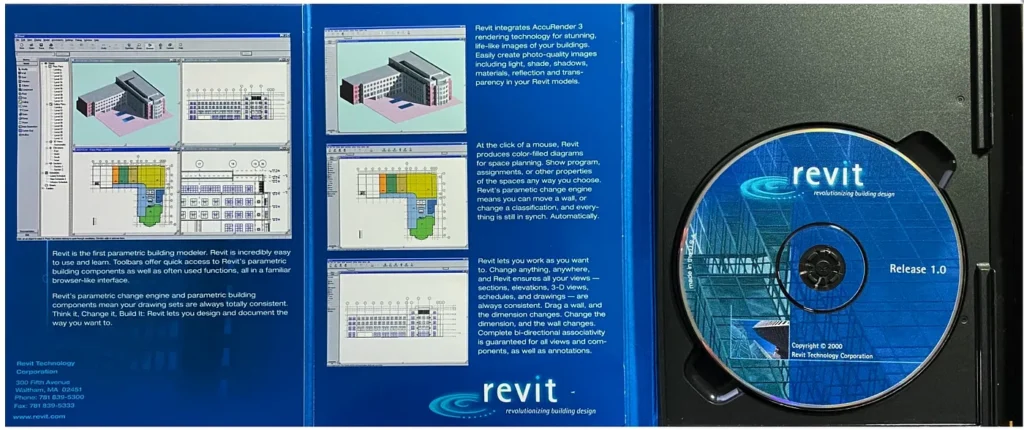
The 1990s marked a definitive transition, with architects, engineers, and builders recognizing BIM as a transformative approach in the design and management of construction projects. Collaborative work and interoperability between disciplines began to be prioritized, solidifying BIM as an essential practice in the construction industry.
Early 2000s – Widespread Adoption
In the early years of the 21st century, we witnessed a significant expansion of Building Information Modeling (BIM), with the methodology being more widely adopted by construction professionals and major organizations. Notable pioneers, such as the British company Foster + Partners, led the way by adopting BIM in innovative projects, showcasing its benefits in terms of collaboration and efficiency.
Large companies, including Turner Construction in the United States, also pioneered the large-scale implementation of BIM. Growing awareness of the advantages of BIM led to more widespread adoption, with many companies recognizing the need to enhance efficiency and reduce risks associated with construction projects.
This era witnessed a substantial increase in the use of BIM worldwide, further consolidating its position as a standard practice in the construction industry.
2007 – Publication of the BIM Handbook
The year 2007 marked a crucial point in the consolidation of Building Information Modeling (BIM) with the publication of the ‘BIM Handbook: A Guide to Building Information Modeling.’ This seminal guide was co-authored by Chuck Eastman, Paul Teicholz, Rafael Sacks, and Kathleen Liston, highlighting Eastman’s expertise, who played a pivotal role from the early days of BIM. The handbook provided a comprehensive and practical understanding of BIM, becoming a reference source for industry professionals and educators.

The publication of the ‘BIM Handbook’ not only solidified BIM as an essential methodology but also provided valuable guidance for those looking to effectively implement BIM in their projects, further fueling the growth and widespread acceptance of the practice in the construction industry.
2010 – Onset of Government Mandates
At the turn of the decade, in 2010, Building Information Modeling (BIM) received a significant boost with the implementation of government mandates in various countries around the world. Leading this movement, the United Kingdom introduced BIM Level 2 for government projects, becoming one of the first countries to adopt regulatory measures to promote the use of BIM in public construction. This initiative was supported by BIM professionals and experts, including consultants like David Philp, who played a key role in formulating and implementing this strategy.
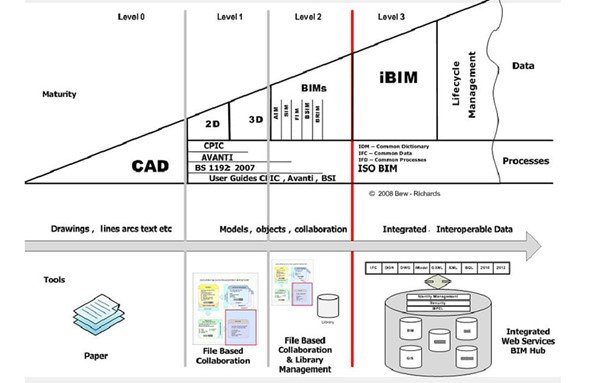
Other countries, such as Singapore and Norway, followed suit, establishing their own guidelines and mandates to promote the integration of BIM in both public and private construction projects. These government mandates were crucial for solidifying BIM as a standard practice in the construction industry, further driving its global adoption and reinforcing the vision of a collaborative and informational approach in construction project management.
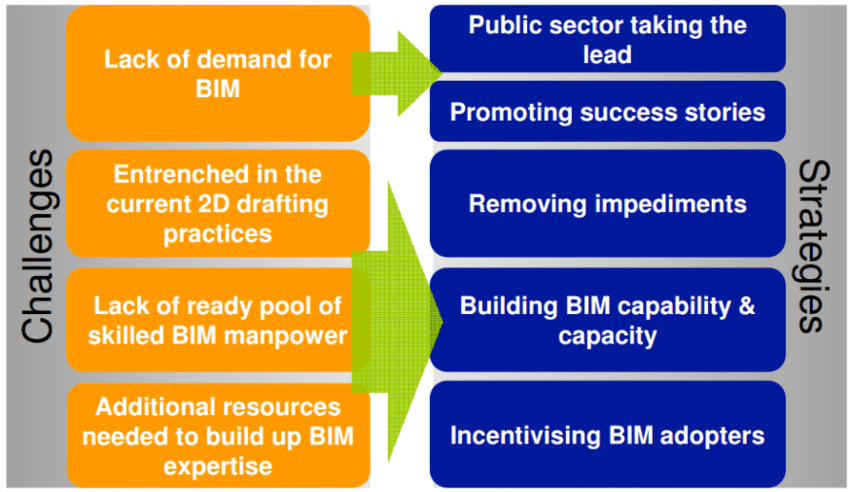
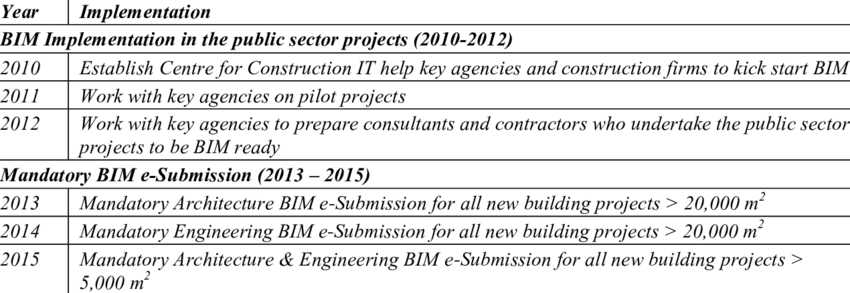
2010s – Expansion to the Full Lifecycle
In the 2010s, Building Information Modeling (BIM) witnessed a significant evolution by expanding to encompass the full lifecycle of construction projects. Professionals and industry leaders played crucial roles in promoting this expansion.
The concept of BIM 3D evolved to embrace BIM 4D (including the dimension of time) and BIM 5D (adding the dimension of cost), offering a holistic view from conception to operation and maintenance. Interoperability between different disciplines and software became a priority, enabling efficient exchange of information throughout the entire building lifecycle.
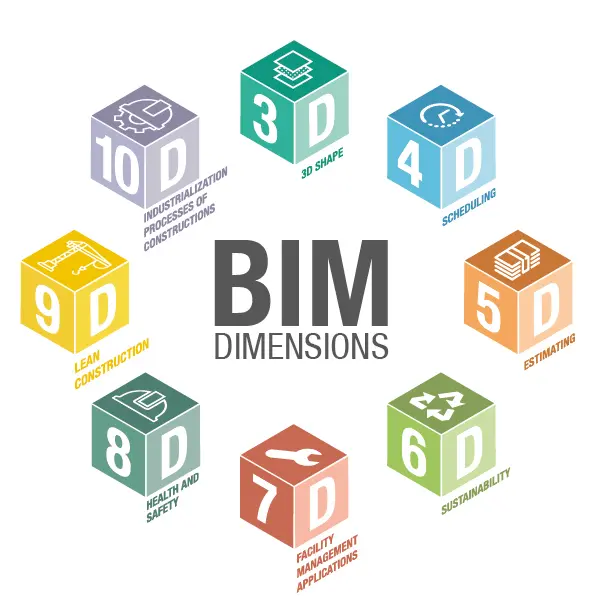
Countries like the United States, Canada, and Australia have also embraced this comprehensive approach, incorporating BIM into their construction practices and regulations. This decade marked the consolidation of BIM as an indispensable tool, not only in the design and construction phases but also in the continuous management and optimization of buildings over time.
2020 and Beyond – Integration of Emerging Technologies
In the last decade and beyond, the evolution of Building Information Modeling (BIM) has been driven by the integration of emerging technologies, marking an innovative era in the construction industry. Visionary professionals have contributed to the integration of technologies such as artificial intelligence (AI), augmented reality (AR), and the Internet of Things (IoT) into the BIM ecosystem.
Countries like China, which have demonstrated remarkable innovation in the construction sector, have led in the adoption of these emerging technologies in large-scale projects. Artificial intelligence enhances data analysis, AR transforms visualization and interaction, while IoT provides more efficient management of built assets.
This convergence of technologies not only enhances the efficiency of BIM but also redefines how we design, build, and manage infrastructure. As we enter a more advanced digital era, the continuous integration of emerging technologies into BIM is shaping the future of construction in ways that were previously unimaginable.
Reflecting on the Evolution and What Comes Next
In retrospect, the timeline of the evolution of Building Information Modeling (BIM) reflects not only technological progression but a fundamental transformation in how we conceive and execute projects in the construction industry. Delving into this historical timeline, it becomes evident that understanding key terms and concepts in BIM is essential for everyone involved in the industry. In the next post, we will dive into the definitions and meanings behind terms frequently encountered in the BIM universe, providing a solid foundation for beginners and enhancing the understanding of experienced professionals in the intricate language of this dynamic and innovative field. This glossary will be a valuable tool to demystify concepts and promote a deeper understanding of essential practices in BIM.




Deixe um comentário